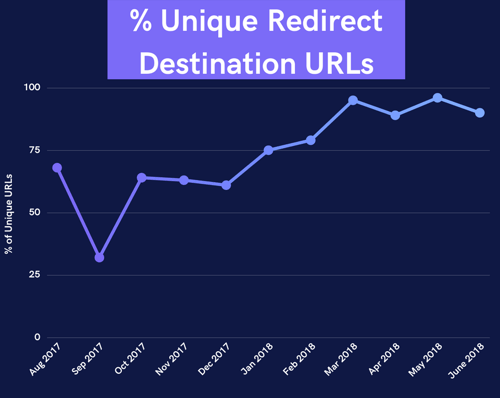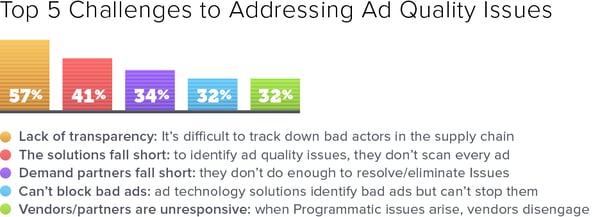Addressing the “Three Pillars of Ad Quality”
Last week, an insightful AdMonsters article summarized the current publisher perspective on ad quality solutions. It made three important points:
- No major SSP or exchange is immune from problems like redirect ads — even the most premium sites are affected. However, redirects aren’t necessarily the biggest headache inducer on the publisher side of the ecosystem. Malicious, offensive or non-compliant ads are equally or more disruptive and threatening.
- It advised publishers to look beyond the most disruptive or pervasive issue of the day and holistically consider all of the ad quality issues they’re facing.
- With that mindset, publishers are shifting away from point solutions, toward solutions that are sustainable and reliable for the long run.
Along with Ad Monsters’ own findings, recent Ad Lightning research was cited throughout the story to illustrate the current trends behind the story.
We thought it may be helpful to add some color to the stats that came from our research:
- Redirects are more prevalent in 2018 than ever before. The number of distinct final redirect URLs jumped roughly 30% from the end of 2017 to March of 2018, and it’s held steady since March. Redirects are a real problem, no doubt. In fact, the number of redirect paths per ad has increased by 59% from the first half of 2017 to the first half of 2018 (avg).

- However, at the beginning of the year, redirects weren’t even identified as a top 3 concern when publishers compared their top worries to 2017 issues (based on an Ad Lightning ad quality survey conducted in January).
- 87% of publishers surveyed earlier this year said their top concerns are offensive ads and scare-ware, followed by ads that disrupt the user experience (85%), malware (82%) and slow-loading ads (81%). Redirects were fifth on the list (79%).

The AdMonsters article also pointed out that publishers are increasingly dissatisfied with reactive solutions. This is also supported by some of our survey results that weren’t included in the AdMonsters piece. Here’s a glimpse of the greatest challenges publishers identified in the various solutions they relied upon:

We highlighted some of these and other survey results in our own article last month. You can read more about that here.
It’s obviously not enough to address the issue du jour with a quick-fix point solution. It’s not enough to implement a patchwork of reactive technologies when s critical threats arise. Publishers seeking true ad quality control should address redirects as well as the “three pillars” (malicious, offensive and non-compliant ads) with a single solution is both proactive and reactive. That approach enables better, more predictible user experiences and greater efficiency among ad ops teams.
We believe the AdMonsters article accurately reflects the importance of, and shifting tides toward, comprehensive, proactive protection against the gamut of ad quality threats.

.png)